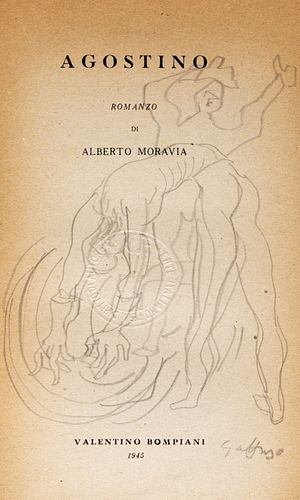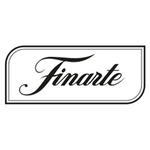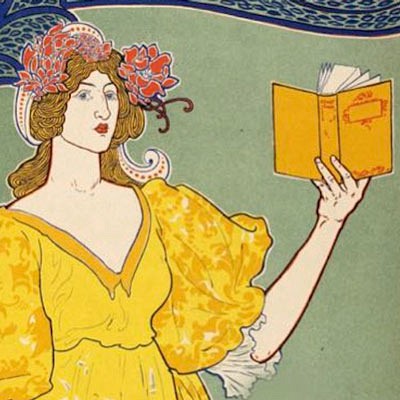Clerici, Fabrizio - Fabrizio Clerici's library
About Seller
Via Sarpi 6
Milano
Italy
Finarte’s core business is the organization of public auctions of works of art and specialty items. Sellers, buyers and investors can rely on our experts for technical and financial advice on works of art, photography, design objects, jewelery, books, wines, vintage fashion and classic cars. In Marc...Read more
Two ways to bid:
- Leave a max absentee bid and the platform will bid on your behalf up to your maximum bid during the live auction.
- Bid live during the auction and your bids will be submitted real-time to the auctioneer.
Bid Increments
| Price | Bid Increment |
|---|---|
| EUR€0 | EUR€10 |
| EUR€200 | EUR€20 |
| EUR€400 | EUR€50 |
| EUR€1,000 | EUR€100 |
| EUR€2,000 | EUR€200 |
| EUR€5,000 | EUR€500 |
| EUR€10,000 | EUR€1,000 |
| EUR€50,000 | EUR€5,000 |
| EUR€100,000 | EUR€10,000 |
| EUR€200,000 | EUR€20,000 |
About Auction
Nov 18, 2020
ROME Palazzo Odescalchi Piazza SS. Apostoli, 80 Wednesday 18 November 2020 SESSION I (lots 1-252) 10:30 a.m. SESSION II (lots 253-680) 3:30 p.m. Finarte info@finarte.it
- Lot Description
The Selecta library of Fabrizio Clerici has 320 titles, 80% of which have signatures and / or dedications of their respective authors to Clerici, about thirty volumes bear original drawings by Clerici, 58 volumes have the note of ownership or signature of Clerici. Together in the lot various catalogs of exhibitions by Clerici and other artists, many of them with dedications and drawings.
** You know, the library describes the personality of its owner, but when he is also an artist then its value doubles. Because that library amplifies and testifies to the network of contacts, connections, passions, deviations and incursions that the artist has been able to create over the years: the library of the artist Fabrizio Clerici is all this, and much more. If you scroll through the titles and the authors, Clerici's friends return, from Bassani to Bigiaretti, from Carlesi to Consolo, from Libero De Libero to Natalia Ginzburg, from Green to Levi, from Macchia to Martini, from Mondadori to Montanelli, from Morante to Palazzeschi, from Piovene to Pound, from Savinio (his Master) to Siciliano, from Soldati to Tamburi, from Tobino to Zavattini to finish with Zolla. A universe of personalities of his world and of parallel worlds, all united by mutual and profound esteem, if not true friendship. And the dedications testify to it, to perfection. Some are real declarations of "love" towards Clerici, towards the debt accrued towards him as an artist, but also as a man. Because Clerici was, in addition to being an excellent painter and draftsman, also an extraordinary cultural personality able to catalyze around himself, and his projects, the best energies of his generation ... and of past and future generations. The library surrounds and bears witness to the tastes of its creator, identifies passions, indispensable and perhaps occasional readings; but nothing appears to be taken for granted, everything seems to contribute like many pieces of an ideal mosaic to outline Clerici's mental labyrinth, his emotional and rational paths that from these readings, and from the knowledge of the different authors, produce lymph for his paintings. That his value as an artist is recognized by his painter friends may seem obvious, and in this sense one can read the beautiful dedications-drawings by Renato Guttuso, one of his closest friends; but that the writers themselves admit his art, exhorting him to even write, this sounds curious. Ennio Flaiano in a letter dated January 1960 concludes: "P.S. If you know how to draw, you know how to write." And this is an exhortation that returns, an evident sign that the same writers who were friends recognized in Clerici an undoubted capacity for storytelling, which could easily translate into writing. An exchange between intellectuals that knows no boundaries, even if even refined and demanding philologists such as Cesare Segre in a letter dated 24 October 1974 try their hand at commenting on his illustrations of the Furioso, declaring however how "... the notes are content; I dare not break down as an art critic. " The library constantly dialogues with the various archives, which are always presented here in the respective lots to follow, in a dialogue that knows no boundaries: each of these volumes opens up a dense branching of suggestions, contacts, relationships, ideas, projects developed or to be developed. It is no coincidence that Clerici uses the blank pages, the margins, the folds of the volumes to draw figures, subjects, details, which perhaps the same readings are suggesting. It is not horror vacui, that feeling that a baroque man as well as he could understand, but rather the urgent need to give shape to the images that appear in his mind and if the only support available is the book you are reading, then that becomes the ideal canvas to fix these images. An archeology of thought that becomes drawing, sketch and sketch, the inspiration caught at its birth that germinates in the mind and hand of Clerici and takes shape in the whites of the printed page. The books, these books, are all this: readings, constant memories of friends, inspiration and paper on which to draw, a true laboratory of the artist Clerici, like his atelier. - Shipping Info
-
Upon written request of the Buyer, Finarte may arrange the packaging and shipment of the lot, on condition that the Buyer: (a) has fully paid the Total amount due; (b) provides Finarte with any certificate of free circulation or export licence or any statement and/or certification required for such purpose. Unless otherwise agreed with the Buyer: (a) packaging and shipment expenses shall be for the account of the Buyer, who may request, at least twenty-four (24) hours before the beginning of the auction, estimates of costs should the Buyer decide to entrust Finarte with the packaging and shipping of the lot; (b) the insurance coverage concerning any risk for (even partial) loss and/or damage caused to the lot during transport must be agreed between the Buyer and the carrier without any liability for Finarte; (c) the cost of insurance shall be for the account of the Buyer. The shipment and packaging of the lot to the Buyer shall be entirely at the risk and expenses of the Buyer and Finarte shall in no event be held liable for any action or omission of packaging workers or carriers.
-
- Buyer's Premium



 EUR
EUR CAD
CAD AUD
AUD GBP
GBP MXN
MXN HKD
HKD CNY
CNY MYR
MYR SEK
SEK SGD
SGD CHF
CHF THB
THB
























